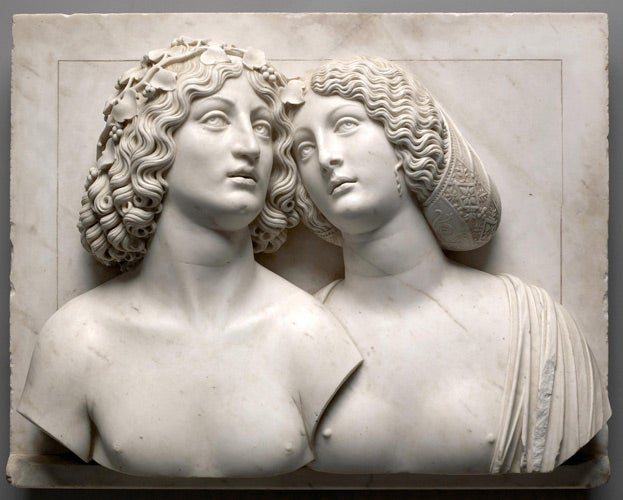Renaissance Faces: Van Eyck To Titian, National Gallery, London
A portrait of Europe at its most magnificent

There is a simple rule which needs to be applied to all art appreciation. If an artwork deserves to be looked at for more than ten seconds, it stands a chance of being a serious piece of work. Many of the works on show at the art fairs during Frieze Week failed that simple test. In this show, such a test would be an insult. Yes, after all that appallingly noisy flim-flam, it is a relief to be able to recommend an exhibition wholeheartedly.
This is a brilliant survey of European portraiture from the 15th and 16th centuries, at that moment in the western tradition when painting the human form reached a degree of brilliance and profundity which has never been surpassed. When you look at these great portraits by the likes of Memling, Holbein, Titian, Pontormo, Botticelli, Bellini, Lotto and so many others – there is an almost absurd embarrassment of riches here; it is as if the fortunate cat is almost drowning in its bowl of cream – you seem to be looking at resemblances which are so much denser, and which reach so much further, than mere human likenesses.
These kinds of likenesses are as far removed from the painstaking vacuity of hyper-realism as you could possibly go. Hyper-realism is of the surface only. Not so these portraits by the masters of the northern and southern Renaissance. Is this in part to do with the European world view of that time, the endemic belief that life on earth was a mere passing moment, and that everything which overshadowed life – the reality of death; the possibility of hell, purgatory or paradise – was weighed in the balance with each step that you took along life's short and pain-wracked road? Did that drive the gaze of the painter or the sculptor inward when he looked and looked at the human form which had been offered up to him?
Because what fascinates us so much about the incomparable portraiture you see displayed in this disappointing, subterranean warren of rooms is that illusionism is only the starting point. There are all the glorious trappings of being alive on earth, and what they mean, too. There is the human face, and then there is how it is to be modified by the gazing eye in order to suggest such virtues as piety, honesty, statesmanship. No portrait comes without a ballast of flattery, manufactured idealism, a calculation on the part of the painter of what the painting is to show over and above the fact that the sitter is alive (or perhaps not), and that he or she has the wherewithal to commission a portrait of such splendour.
A number of the portraits in the show have journeyed a very short distance indeed. When I last looked at the great portrait of Doge Loredan by Giovanni Bellini, for example, it was in a gallery almost directly above the one in which it now hangs. Bellini's great portrait is a ruthless act of character analysis, one which shows the ruler of Venice in all his brilliantly imperious and gawdy cruelty. It is one in which the extraordinary authority of his dress, the sheen of his garments, appears to set him apart from other mortals. There is a raptor-like steadiness about the gaze. A much less well-known portrait by Albrecht Durer looks, by comparison, like an exercise in pure painterly audacity. Durer has painted a portrait of a banker called Kleberger in such a way that he looks as if he is bursting out of an antique portrait medallion.
The show gives us children to delight over – look especially at the tiny, brilliantly touching portrait of Madeleine de France by Jean Clouet, overshadowed by its broken-pedimented frame – and preposterous individuals to laugh at: don't miss the wonderfully ridiculous portrait of the Duke of Urbino by Justus of Ghent. The duke, a famous leader of mercenary armies, is clad, top to toe, in full dress armour as he reads a book. Beside him stands his tiny, 5-year-old son, weighed down by a terrible encumbrance of strings of pearls.
To 18 January (020-7747 2885)
Join our commenting forum
Join thought-provoking conversations, follow other Independent readers and see their replies
Comments